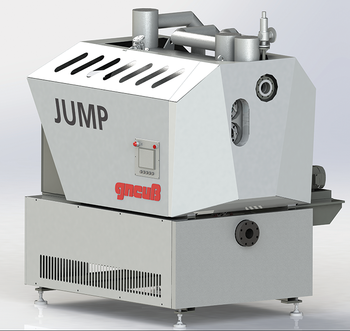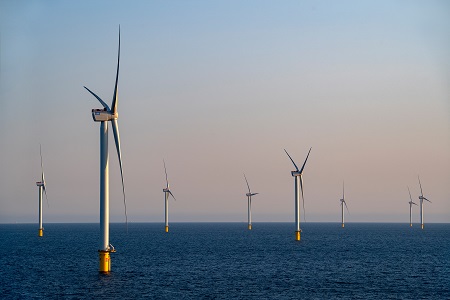At K 2016, Gneuss Kunststofftechnik GmbH will premiere the brand new Jump system, which in combination with its MRS extrusion technology, can reprocess polyethylene terephthalate (PET) waste to high value products.
The Gneuss Processing Unit (GPU) has been available for several years now the reprocessing of bulky PET waste such as post-consumer bottle flake and industrial waste from fiber and film manufacture.
It consists of the Gneuss MRS extruder with its superior devolatilization and decontamination performance together with the efficient Gneuss Rotary Disc melt filtration systems and the Gneuss Online Viscometer for intelligent dynamic viscosity control, monitoring and logging.

A further development is the extension of the venting system with several openings in the barrel. Depending on the application, these additional openings can be in form of several openings in the MRS section of the barrel or venting ports in the barrel of the plasticizing section.
Gneuss‘ new Jump system is installed directly downstream of the GPU and thanks to its ingenious process ensures an accurate and controllable IV boost of the PET by up to 0.3 in the melt phase.
The Jump system is a compact, quick and efficient alternative to conventional solid state polycondensation (SSP) systems and enables direct reintroduction of the polymer into the production process without the need to remelt the PET, the company explained.
Depending on its properties, industrial waste is first fed through a shredder or a knife mill until the size is reduced so that it can be fed into the extruder. This can mean either compaction of the size reduced waste or a crammer feeder fitted directly to the extruder.
The first important processing stage: melt decontamination takes place in the extruder. With its enormous devolatilisation capacity, the MRS extruder can process PET waste with high residual moisture levels and/or contamination (such as spin finish oils) without the need for any pre-treatment of the waste.
In the Multi Rotation (MRS) section of the extruder a huge polymer surface area and rapid surface exchange rate under vacuum ensure that all these volatile contaminants are reliably extracted. Solid contamination is extracted with the fully-automatic and process-constant Gneuss Rotary Melt Filtration System. With filtration fineness of down to 20µm and below, a pure and particle – free polymer melt is guaranteed.
Subsequently, the purified and homogenized polymer is fed by means of a melt pump into the Jump, where the second important stage of the process takes place. Here, too a large surface area of the polymer melt and optimum residence time of the polymer under vacuum are decisive factors, Gneuss explained.
The polymer melt is kept under vacuum as it passes over slowly rotating elements. Through control of the residence time and the speed of the rotating elements, controlled polycondensation takes place whereby controlled IV boosting takes place of typically 0.02 dl/g to maximum 0.3dl/g.
The design of the Jump system avoids the ingress of oxygen so that the yellowing effect encountered during the recycling of PET is reduced to minimum. After the PET melt has passed through a stilling chamber in the Jump system, the polymer is pumped directly into the production process (for example direct extrusion spinning, strapping) or to a pelletizing (chip cutting) system.
The Jump system is available for different capacities of between 100-2,000kg/h. At K 2016, Gneuss will show an MRS 90i for a throughput rate of 400kg/h, for industrial waste recycling with intermediate material buffer, auger and crammer/feeder. The extruder is coupled to the new Jump system, model V600.
Source : China Plastic & Rubber Journal














